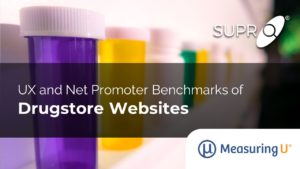
Fifteen minutes could save you 15%. Nationwide is on your side. You’re in good hands with Allstate.
Auto insurance commercials are ubiquitous. It’s no wonder, considering the market. In 2020, the
population of the United States was 331,000,000, and
230,000,000 Americans were licensed drivers.
If you drive, you
should have auto insurance. Until recently, most customer interactions with an auto insurance company were through its agents. This may have changed in 2020. J.D. Power has conducted its annual U.S. Auto Insurance Study for over 20 years.
The latest study, found for the first time that clients rated company websites as more important than agents for client interaction and service.
To better understand this domain, we benchmarked the user experience of the following top auto insurance websites to see how people are using them and how they might be improved:
- Allstate (allstate.com)
- GEICO (geico.com)
- Liberty Mutual (libertymutual.com)
- Nationwide (nationwide.com)
- Progressive (progressive.com)
- State Farm (statefarm.com)
We collected
SUPR-Q and
Net Promoter data, investigated reasons for using the services, measured users’ attitudes regarding their experiences, and analyzed reported usability problems.
Benchmark Study Details
In November-December 2020, 301 U.S. residents participated in a
retrospective study in which people who had used at least one auto insurance website in the past year reflected on their experiences.
Participants completed the eight-item
SUPR-Q (which includes the
Net Promoter Score), answered the
UMUX-Lite standardized questionnaire, and answered questions about brand attitudes, usage, and their prior experiences.
Quality of the Auto Insurance Website User Experience: SUPR-Q
The SUPR-Q is a standardized measure of the quality of a website’s user experience and is a good way to gauge users’ attitudes. It’s based on a rolling database of around 200 websites across dozens of industries, including auto insurance.
SUPR-Q scores are percentile ranks that tell you how a website ranks relative to the other websites. The SUPR-Q provides an overall score and detailed scores for subdimensions of trust, usability, appearance, and loyalty.
The percentile scores for the six websites ranged from 52–98%, averaging 78%. In this study, State Farm had the lowest SUPR-Q (52
nd percentile), and Nationwide had the best (98
th percentile).
Usability Scores and Trust
We asked participants to reflect on how easy they thought it was to use and navigate through the websites. Nationwide had the highest score (99
th percentile), and State Farm had the lowest (48
th percentile). Comments about State Farm usability included:
- “The search function is not very user friendly.”
- “There are emergency alerts at the top of the website that take up too much of the screen.”
Trust scores differed from usability scores, with a high at the 95
th percentile for GEICO and a low at the 47
th percentile for Liberty Mutual.
Loyalty/Net Promoter Scores
The auto insurance websites had an average NPS of about 17%, so most of the websites had more promoters than detractors. In general, a better user experience
predicts higher loyalty.
Use of Auto Insurance Sites and Mobile Apps
As a part of this benchmark, we asked participants how they accessed the insurance services and to identify their top tasks. All participants reported using their desktop/laptop computers, and 75% also used mobile apps, and 72% used mobile websites.
The typical frequency of use varied from once a month to a few times a year (typical for services that bill by the month or quarter). The top tasks were paying bills (34%), checking coverage/policy (15%), and getting quotes/rates (7%). Full details of the top tasks are available
in the report.
Components of the Online Auto Insurance Experience
Across the websites, using a series of five-point scales (see Key Drivers), we computed the top-two box percentages of items that rate components of the auto insurance experience. Overall, 87% of participants agreed that it was easy to pay bills online, and 83% indicated that the website features met their needs. Only 53% felt it was important to be able to change agents online.
Key Drivers
To better understand what affects SUPR-Q scores, we asked respondents to agree/disagree with the following attributes of the auto insurance websites on a five-point scale from 1 = strongly disagree to 5 = strongly agree. A
key driver analysis uses regression modeling to quantify the extent to which ratings on these items drive (account for) variation in overall SUPR-Q scores.
- I can easily find my policy documents and details.
- I can easily pay my bill online.
- The website is always fast and responsive.
- It’s easy to manage account settings on the website.
- Insurance with [brand] is a good price for the value.
- It’s important to me to easily change my agent online.
- It’s easy to do what I want to do online.
- When I use the website, I feel like I understand what I’m doing.
- I like to shop for insurance frequently to make sure I’m getting a good rate.
- Once I find a good insurance company, I like to stick with it, even if it doesn’t have the lowest rates.
- It’s important to me that it be easy to file a claim online.
- The website features meet my needs.
- It’s important to me that it be easy to track claims online.
- I prefer to take care of my insurance online rather than interacting with agents.
- I won’t do business with an insurance company that doesn’t have local agents.
- I prefer having all of my insurance (auto, home, life, etc.) with one company when I can.
- It’s important to me that my insurance company provides discounts for bundles.
Key Drivers Include Brand Attitude and the Feeling of Understanding
We often find brand attitude to be a major driver of SUPR-Q scores, and this time was no exception, with brand attitude accounting for 15% of the variation in overall SUPR-Q scores. While notable, this number is of limited value because brand attitude is more of a
lagging than leading indicator. Knowing that brand attitude affects SUPR-Q ratings doesn’t provide much specific guidance about what improvements to make, but it’s an important metric to track over time.
The top key driver from the list above was “When I use the website I feel like I understand what I’m doing” (accounting for 19% of SUPR-Q variation). Most of the websites had top-two box scores over 80%, but the score for Liberty Mutual was 64%. Multiple comparisons of means found only one significant difference (p < .10) among the sites, with Nationwide better than Liberty Mutual. Negative comments about Liberty Mutual related to this key driver included criticism of the design layout, navigation issues, and difficulty finding basic information.
Other significant key drivers included the ease of managing account settings and getting a good price for the value.
What to Improve
Key areas of improvement cited by respondents for each website/app include:
- Allstate: Lack of detailed information (e.g., “I wish there was more information on my policy details/breakdown on the payment page.”)
- GEICO: Visual design (e.g., “Not the most attractive web site.”)
- Liberty Mutual: Difficulty finding basic information (e.g., “I need a FAQ page.”)
- Nationwide: Mobile usability (e.g., “It could be a bit more mobile friendly.”)
- Progressive: Poor navigation (e.g., “Feels kind of cluttered.”)
- State Farm: Poor navigation (e.g., “Not particularly intuitive.”)
Summary and Takeaways
An analysis of the user experience of six auto insurance websites/apps found
- Significant variation in user experience across the six auto insurance websites. The websites had SUPR-Q scores ranging from the 52nd to the 98th percentiles (with the 50th percentile being average). The NPS reflected these positive scores with an average of 17% (generally more promoters than detractors).
- There was a high level of mobile use. The typical frequency of use varied from once a month to a few times a year (typical for services that bill by the month or quarter). About 75% of respondents reported using mobile apps, and 72% reported using mobile websites.
- The most important key driver was “When I use the website, I feel like I understand what I’m doing.” Multiple comparisons of means found only one significant difference (p < .10) among the sites for this measure, with Nationwide better than Liberty Mutual. Negative comments about Liberty Mutual related to this key driver included criticism of the design layout, navigation issues, and difficulty finding basic information. Other key drivers were brand attitude, ease of managing account settings, and getting a good price for the value.
Full details are available in the
downloadable report.
 Fifteen minutes could save you 15%. Nationwide is on your side. You’re in good hands with Allstate.
Auto insurance commercials are ubiquitous. It’s no wonder, considering the market. In 2020, the population of the United States was 331,000,000, and 230,000,000 Americans were licensed drivers.
If you drive, you should have auto insurance. Until recently, most customer interactions with an auto insurance company were through its agents. This may have changed in 2020. J.D. Power has conducted its annual U.S. Auto Insurance Study for over 20 years. The latest study, found for the first time that clients rated company websites as more important than agents for client interaction and service.
To better understand this domain, we benchmarked the user experience of the following top auto insurance websites to see how people are using them and how they might be improved:
Fifteen minutes could save you 15%. Nationwide is on your side. You’re in good hands with Allstate.
Auto insurance commercials are ubiquitous. It’s no wonder, considering the market. In 2020, the population of the United States was 331,000,000, and 230,000,000 Americans were licensed drivers.
If you drive, you should have auto insurance. Until recently, most customer interactions with an auto insurance company were through its agents. This may have changed in 2020. J.D. Power has conducted its annual U.S. Auto Insurance Study for over 20 years. The latest study, found for the first time that clients rated company websites as more important than agents for client interaction and service.
To better understand this domain, we benchmarked the user experience of the following top auto insurance websites to see how people are using them and how they might be improved:


